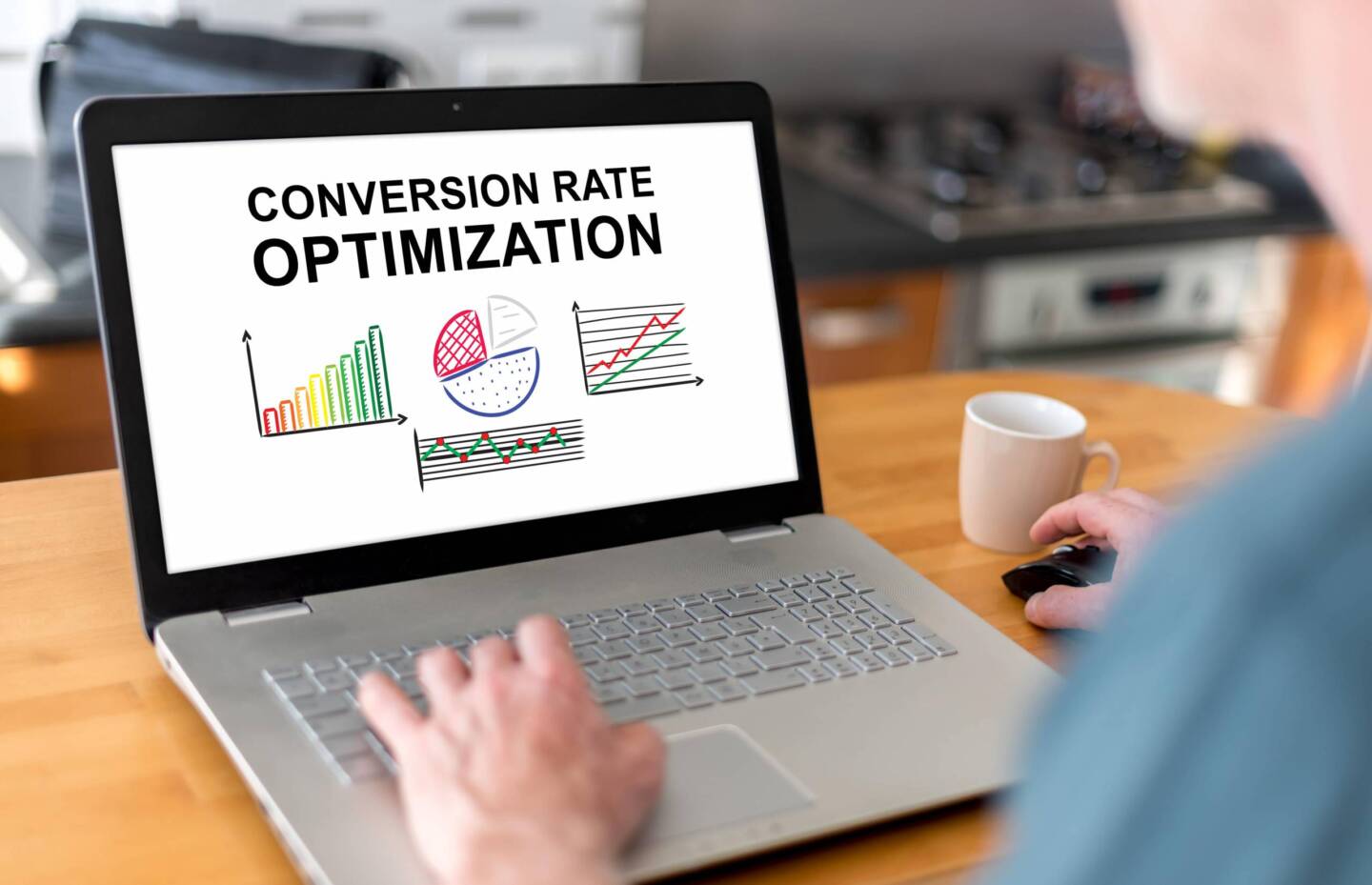
Everything You Must Know About Conversion Rate
If the above title piqued your interest, you are likely searching for ways to improve the effectiveness of your website. Conversion can refer to many different successfully completed processes, and its coefficient is a metric for measuring, analysing, and continuously enhancing.
What is transformation?
A business website (such as an online store) always serves a specific function. Surely you can provide examples of when a visitor accomplishes this objective. This is the ideal form of conversion, known as macro-conversion.
Depending on the nature of your business and the traffic structure, the user will have the opportunity to view it on each and every visit, or only on rare occasions. In any event, it is worthwhile to assist him. Consequently, both industries with lengthy and brief sales cycles benefit from micro-conversions.
Each procedure has its own particularities. Customers can use them to order complementary products, explore knowledge, learn about new products, enrol in a loyalty programme, or transition from one large conversion to the next. In general, micro-conversions consist of maintaining contact with a potential customer, staying in the recipient’s mind, and creating new business opportunities.
It is possible that these minor achievements are also accessible to you. Does the visitor have access to a contact form? Downloadable application of value? A field for quickly adding an email address for newsletter subscription? Organizing these functions is crucial if so. Each interaction should provide the user with an opportunity to return to your website and convert in macro mode.
Initial assessment
A simple step suffices to initially comprehend how your conversion rate operates.
The number of conversions from a single user divided by the total number of unique sessions multiplied by 100 percent. Alternatively, in a broader context: the total number of conversions divided by the total number of sessions multiplied by 100 percent.
Unique visits can be used to determine your conversion rate, but sessions are regarded as more reliable. Typically, they are set to expire 30 minutes after the initial page load. Even if the user leaves the website during this time, they continue. During the session, the user may return to the website multiple times to view products, add them to the basket, and complete the transaction.
To delve deeper into the calculation and customise the method to your business, you can employ the comparison: For a business that sells a large quantity of products to its customers, the ratio is computed using the conversion rate multiplied by the number of sessions (x100%). You can also investigate the scale effect by dividing the number of transactions by the total hit counter for all unique visitors.
For businesses with sporadic conversions (e.g., subscriptions), where the customer incurs a liability for a longer period and his subsequent visits do not generate new profits, the situation is more complicated. Micro-conversions will encourage him to commit to a longer-term partnership; free trial periods are the best illustration of this. And because even a small percentage of a session can result in a sale, these businesses measure conversion rates across all visits. Without limiting your research to a specific user. The truth will be revealed when the number of subscriptions is divided by the number of visitors (x100%).
Clearly, the nature of the conversion depends on the business type. As a result of varying objectives, factors affecting its level and types will also vary. In the B2C and e-commerce industries, customers typically make purchases on their own. In B2B, he initiates contact with the sales department through an inquiry or phone call.
Due to this diversity, it is also challenging to compare the conversion rate of a particular store to the market. Nonetheless, if you need a reference point and are a Google Analytics user, you can entrust littledata.io with the calculation and comparison. Nonetheless, this may not be sufficient. Even within a single industry, the ratio is influenced by an insufficient number of elements and processes to permit a reliable comparison. To alleviate this uncertainty, it is assumed that 2% of macro-conversions in e-commerce represent a successful outcome. In light of this, it is prudent to initiate a long-term optimization strategy and implement a consistent measurement method. The number of conversions per user or session.
Why should your conversion rate be measured?
The first reason is hidden behind the acronym ROAS which stand for Return On Ad Spend. The combination of conversion rate and ROAS enables you to calculate the ROI of an advertisement or campaign. The calculation is as simple as dividing the revenue (conversion value) by the cost of the advertisement. The data are then routinely compared – after the introduced changes, i.e. during optimisation.
The second reason is positioning synergy. This is because increasing your conversion rate is a time-consuming and worthwhile endeavour. On the one hand, SEO goes one step further, that is, beyond registering a website visit. In contrast, it offers a direct evaluation of the quality of acquired traffic. Thus, the SEO area acquires data for analysing the quality of the sources, the expected number of clicks, and the effectiveness of keywords. In exchange for these data, the department of conversion rate optimization receives information regarding hot and cold traffic. As you might expect, cold traffic refers to the first time a user interacts with a website. Warm traffic, in contrast, consists of returnees. These two types of visitors are taken into account by analysing and enhancing the likelihood of conversion.
How can the conversion rate be optimised?
CRO (Conversion Rate Optimization) encompasses all optimization processes used within the scope discussed. These include actions designed to increase the number of conversions per volume of traffic or per user. Each conversion listed in the table should be optimised, not just those prefixed with „macro.” This strategy will yield a comprehensive and profitable system.
The optimization problems are derived from the conclusions drawn from traffic statistics. You may discover, for instance, a high bounce rate. The majority of visits conclude with the closing of the first page. Typically, such hypotheses generate an optimization path. Theoretically, the analyses may reveal that prospective customers experience difficulties with the shopping cart. By analysing their choices, you can identify the problematic moment and seek a solution. This will assist you in discovering the truth:
A/B tests involve displaying different versions of a website or its subpages to distinct groups of users. They allow you to evaluate which solutions support the conversion process most effectively.
User Experience research (possibly audit): they answer questions regarding the influence of interface elements on visitor decisions.
Quantitative data analysis derived from traffic monitoring tools.
It is crucial to conduct research with a focus on the characteristics of the target audience.
The subsequent optimization process should ideally begin with conversion tracking on a proven analytics platform. Moreover, it will provide the information necessary for quantitative analysis. Google Analytics will serve as a good illustration. This tool’s statistics allow you to learn how users interact with the website.
So if you ask yourself questions like:
- What are the origins of the recent increase in external traffic?
- Who visits the website (age, gender, location, interests, warm versus cold traffic)?
- What are the technical specifications of the users’ devices (and browsers and applications)?
- Which statistical subpage is viewed first by the visitor?
- Which sections of the website receive the most traffic, and why is this the case?
- How long is each session?
- Where does this traffic „burn,” or where does the greatest amount of ineffective website abandonment occur?
Google Analytics will then be able to respond. This is a much better and less financially risky course of action than relying on your own intuition, speculation, and opinions.
Obtaining complete responses to the aforementioned questions also paves the way for remarketing, or regaining the attention and interest of previous site visitors. You will be able to reach them, among others, with ads containing the most recently viewed product. Those who postponed their decision or forgot the store’s location are an especially valuable target market. Perhaps they are currently researching the competition. Sometimes a small discount or promotional offer is sufficient to grab their attention.
However, the American giant’s analytical tool can be implemented poorly. Then, despite its immense potential, it will collect insufficient or even erroneous data.
Some clients choose preventive audit to ensure that GA is operating at full capacity for them, that the code is correctly implemented on the subpages, that the filters are correctly set, and that the services are properly configured.
In addition to the well-known Google tool, there are additional recommendations on the market for optimising your conversion rate:
- Hotjar: Generates heatmaps for scrolling, mouse movements, and clicks. It enables a more in-depth analysis of user behaviour, and the plans include an interception range of 1,000 to 10,000 views. Session recording is beneficial if you require more natural-sounding tracks. On the basis of this example, it is easier to construct a visitor’s psychological profile and evaluate the efficacy of interactions.
- Quantcast Measure: Enables you to observe live traffic and gain insight into its characteristics. It provides accurate demographic data required to personalise content based on tags and clicks.
- BigCommerce Analytics: If you are considering SaaS for your online store, this platform includes an analytical panel. The status of abandoned shopping carts and internal search data can be particularly useful. It is a component of an exclusive conversion optimization strategy. It is intended to assist in adjusting the message on subpages so that it more effectively matches the query content.
- CrazyEgg: an all-encompassing tool for solving conversion issues. Such as locating locations where users get stuck. It offers click, scroll, and heat maps, as well as A/B testing. It also allows you to record individual user sessions, revealing their origin and destination. The generated reports constitute the conclusion.
- Clicktale: a SaaS cloud application that visualises user experiences and the context of each interaction. Similarly, it is shared with a transparent reporting system, and niche tools also merit consideration. Their greatest strength is the flawlessly developed single functionality.
- Optimizely: useful, particularly if you rely heavily on A/B testing for your optimisation.
- SurveyMonkey: you can create surveys for direct market feedback for free and without restrictions.
What factors should be considered during a CRO?
The data obtained from the aforementioned resources can provide numerous concrete recommendations. If you need examples as a reference, consider the following 15 universal tips.
- Load speed. The visitors’ tolerance is not particularly high. Approximately half of them can click „back” after only two seconds. Therefore, speed tests, careful selection of a hosting plan, and graphic optimization are essential.
- Clarity and simplicity of the layout. It will pay off with more predictable interactions and quicker interface comprehension. Users will not be distracted by non-conversion-relevant elements.
- Parallel optimization on mobile devices. The lack of responsiveness can be disheartening upon initial contact and upon subsequent visits from a mobile device.
- Initial display of the brand. You can begin establishing rapport with a potential client within the first few moments of interaction. Visitors can be welcomed with brief phrases. Alternately, you can declare your identity, aesthetic, and values on a single image or graphic.
- Significant interaction with materials. Extensive gallery with zooming and rotating images and video presentations. The objective is to become as intimately acquainted with the product as possible.
- The basket that always waits for the consumer. If the products are not lost when the customer abruptly leaves the store, the conversion will resume where it left off.
- Streamlined order tracking. Customers will appreciate the intuitive interface that clearly displays the status and specifics of their orders.
- Freedom of cold movement. Without registration or obligations for viewing. „good morning” pop-ups on web pages activate user defences. They produce an unfavourable first impression.
- Urgent opportunities. In the later stages of your visit, a little adrenaline will help trigger your subconscious decisions. For instance, adding a product to your favourites may trigger a limited-time discount. Or indicating the final available items.
- Answering all potential questions in the description. The more information provided, the easier it is to visualise and acquire the product. Additionally, it is easier to compare to others.
- Intuitive filtering of search results. Easy-to-select options will eliminate subpage switching. Users will believe that you are able to „read their minds.” A quicker selection procedure also results in a more consistent shopping disposition. It is preferable not to cloud it with dull stimuli and the monotony of searching. The third advantage is the enhancement of conversion odds in the absence of specific proposal interest.
- Ownership without danger or complication. SSL certificate, indicators regarding the used cybersecurity software, streamlined procedures, a clear point of purchase, a variety of payment options, logos of companies that support online transactions, and payment cards. These elements will provide a feeling of comfort and safety. Free shipping or delivery on the same business day will be a nice bonus. In turn, a straightforward return policy will solidify your trust.
- Community Assistance. Public opinions of users carry more weight than advertising claims and assurances.
- Continuous communication with the client. Today, the accessibility of customer service has a significant impact on the level of trust. Especially when it is a chatbot-supported live chat option.
- Retargeting. The possibility of entering your store and seeing an advertisement for the most recently viewed offer. This can be a buying impulse for many visitors who are ready to convert. Such personalised advertising may appear on websites related to your target audience’s interests, as well as on social media.
Lastly, a piece of advice for site administrators who cannot yet boast high traffic. Opinions in the industry indicate that it is beneficial to initiate A/B tests as soon as possible and to utilise a variety of website versions. The lower the traffic the less variations are needed. For 100 unique users per month, 2 versions are enough. In exchange for a discount, parallel testing is possible. This will allow you to enter the path of increasing the conversion rate more quickly and provide future data.
Consider the easiest test to develop as an example. The same layout with different headers and content was tested for micro-conversion, which is defined as a decrease in bounce rates. The same holds true for the colour palette, logo placement, and button placement. Advanced tests may necessitate a complete interface rebuild.
If it is already possible to identify these, it is preferable to focus the tests on the most popular subpages. Due to the difficulty of testing macro-conversions, it is prudent to concentrate on micro-conversions. The second pillar will consist of an analysis of the remaining elements, including bounce rate, time on site, and click paths. Priority is to give reasons to move forward. Best of luck.
Udostępnij



